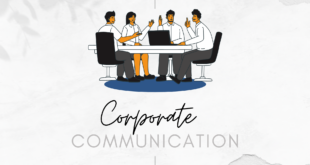When planning your business, it’s inevitable to come across the term ‘sales enablement.’ Every company creates, designs, and implements it differently, but the main idea is that it has become a necessity for the success of any organization.
Sales enablement is a well-devised strategy that equips businesses with the best tools and resources to help them sell efficiently and effectively. It provides companies with a strong and defined structure to aid sales teams across the selling process. For the latest guide on sales enablement, go to https://www.allego.com/blog/what-is-sales-enablement/.
It’s not enough to mimic other companies’ sales enablement structures and execute them in your sales and marketing operations. This may not work since each business has its own strengths, weaknesses, and goals.
Hence, it’s important to establish your own framework that’ll help you sell well. However, developing a plan is never easy. Here are some of the most effective tips and tricks to follow for a successful sales enablement strategy.
Know Your Mission

To maximize customer win rates, you need to create a sales enablement framework or playbook that’s easy to follow, effective, predictable, and repeatable. It’ll help you improve your communication and measure your success. Without a clear mission, you won’t be able to reach your goals and achieve growth on time.
If you’re establishing a sales enablement strategy, the first thing to do is define your purpose. Why are you doing this? What are you trying to achieve? Before laying out your plans, know the right questions that’ll guide you throughout the process.
While every company has different strategies to follow, the following fundamental concepts below may work for most organizations:
• Improving collaboration and communication between different teams, particularly sales and marketing
• Producing the right content for your sales team to sell your brand effectively
• Modernizing the lead qualification process for a smooth transition of data from marketing to the sales team
• Training your teams to engage with leads effectively
• Implementing new technology to improve the techniques mentioned above
Gather Essential Data

A sales enablement strategy grounded in crucial data and statistics is highly likely to succeed. You may use key performance indicators (KPIs) to help you manage your team and determine which aspects are working and which are not. With their assistance, you’ll be able to set targets to focus on areas that have to be improved.
Some KPIs for an effective sales enablement strategy include customer acquisition, sales productivity, sales attainment, and the number of sales quotas. These metrics will help you regularly track your progress along the sales process.
It’d be helpful to build a plan rooted in the challenges you want to overcome and the goals you want to attain. Keep an eye on your targets by using the data you acquire and is suitable for your objectives of driving in more customers.
Prepare Your Team

Once you’ve identified your mission and KPIs, it’s time to form your sales enablement team. Recruiting the right people for the job is crucial to achieving your goals and success. You need to help your human resources teams understand the things you’re looking for, such as skill sets, qualifications, and substantial experiences.
Then assign the team member who has to play a key role in decision-making. The right manager will effectively track your strategy and provide necessary resources to your teams. In addition, they should be able to contribute ideas and offer insights into areas that need to be improved.
Other personnel and department heads should get involved in the process as well. The overall success of your strategy mainly relies on effective collaboration, communication, and execution between different staff and teams.
Furthermore, don’t forget to include the executives in the process. You have to ensure that they’ll buy your sales enablement strategy. After all, they’ll be the ones to approve everything your plan needs, from budget to other sales resources.
Set Responsibilities

When setting workloads across different teams, make sure that they’re well-defined, easy to understand, and given to the right people who can execute them properly. At this point, alignment is critical. Without it, everything you’ve worked hard for will slowly fall apart. Eventually, you’ll lose your time, money, efforts, and other essential investments.
Here are the following responsibilities and duties you might need to consider:
• Customer relationship management
• Sales process management
• Software strategy onboarding
• Sales content ideation and creation
• Training and development management
• Campaign promotions and sales projects
• Sales playbook management
There’s only one way to relay the right tasks to the right staff: proper communication. So, talk to your team and discuss the responsibilities to have a seamless operation across different teams.
Use The Right Tools And Technology

A sales enablement team works effectively if well-equipped with the right sales tools and equipment. Tools will allow them to produce great content, manage customer relationships, and analyze key performance metrics to meet the needs and demands of customers and streamline important business operations.
Here are some tips that will help you choose the right sales enablement tools and technology for a more effective and efficient sales and marketing flow:
• Ease Of Use: Are they easy to use? Do they allow you to reach your goals within a considerable amount of time? If such tools are unable to meet your needs in real time, then it’s time to replace them and look for others that are easy to operate instead.
• Data Analytics: Do they provide you with the right data to analyze? Another thing you should look for in an effective sales tool is its ability to record data properly. With this, you’ll be able to evaluate your sales plan and work on areas of improvement.
• Integration To CRM: A CRM tool is important to supervise data and maintain customer experience. If your sales enablement tool can merge with your CRM software, your sales operations will be productive.
Final Words
A sales enablement strategy is vital for a growing and thriving business. When your sales and marketing teams implement it and apply the right framework, tools, and other resources, they’ll be able to sell your brand successfully and help your business earn higher profits.
However, developing an effective sales enablement strategy isn’t easy to do, but following these tips and techniques will make the job easier.
 Imagup General Magazine 2024
Imagup General Magazine 2024



